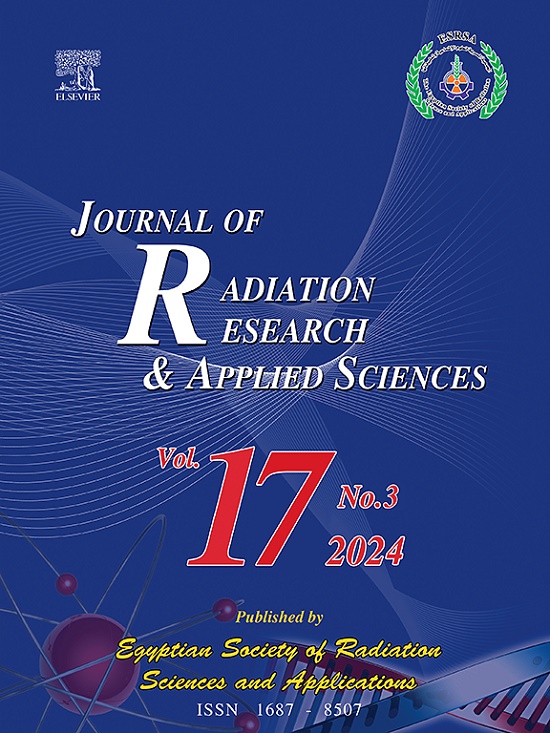OVGGNet: Optimized deep learning for lesion segmentation of medical images using color features
IF 1.7
4区 综合性期刊
Q2 MULTIDISCIPLINARY SCIENCES
Journal of Radiation Research and Applied Sciences
Pub Date : 2025-05-20
DOI:10.1016/j.jrras.2025.101592
引用次数: 0
Abstract
Medical image segmentation is a challenging task in image processing, automatic segmentation needs expert suggestions and clinical practices such as treatment planning, disease diagnosis and disease progression. The primary problems in inaccurate lesion segmentation are variation of lesion conditions, lesion irregularity and presence of similarity between lesion regions. To avoid these problems, the Optimized Deep Learning model named as OVGGNet is proposed for the accurate lesion segmentation of medical images. Different data sources are used to collect different kinds of medical images that are preprocessed to enhance contrast of the medical images. The contrast enhanced images are predicted from this preprocessed stage, and then the Dilated dense VGG19 (DDVGG19) model is employed to extract global and local features from the enhanced images. In the feature extraction stage, the Shi Tomasi Corner detector is applied for shape identification and the linear dimensionality reduction approach is applied for undesired information removal. The Optimized Color Feature (OCF) operation is included at the final lesion segmentation tasks to carry out the different kinds of segmented output. Finally, the mapped images are predicted by fusing original and segmented images and its visual representations are provided in the experimental validation. The numerical and graphical validations are conducted to find the optimal performances during lesion segmentation of medical images. The significant performance measures such as segmentation accuracy and Dice Similarity Coefficient index (DSC) achieved performances of 98.81 % and 96.4 % respectively. The comparative analysis provided that the proposed model attained a better performance rather than existing approaches.
OVGGNet:利用颜色特征优化医学图像病变分割的深度学习
医学图像分割是图像处理中的一项具有挑战性的任务,自动分割需要专家建议和临床实践,如治疗计划、疾病诊断和疾病进展。病灶分割不准确的主要问题是病灶条件的变化、病灶的不规则性和病灶区域之间存在相似性。为了避免这些问题,本文提出了一种优化的深度学习模型OVGGNet,用于医学图像的病灶精确分割。利用不同的数据源采集不同种类的医学图像,对其进行预处理,增强医学图像的对比度。在此预处理阶段对对比度增强图像进行预测,然后采用扩张密集VGG19 (DDVGG19)模型从增强图像中提取全局和局部特征。在特征提取阶段,采用Shi Tomasi角点检测器进行形状识别,采用线性降维方法去除不希望的信息。在最终的病灶分割任务中包含了优化颜色特征(Optimized Color Feature, OCF)操作,以实现不同类型的分割输出。最后,通过融合原始图像和分割图像对映射图像进行预测,并在实验验证中给出了映射图像的视觉表示。通过数值和图形验证,找出医学图像中病灶分割的最佳性能。分割精度和骰子相似系数指数(DSC)分别达到98.81%和96.4%。对比分析表明,所提出的模型比现有的方法获得了更好的性能。
本文章由计算机程序翻译,如有差异,请以英文原文为准。
求助全文
约1分钟内获得全文
求助全文
来源期刊

Journal of Radiation Research and Applied Sciences
MULTIDISCIPLINARY SCIENCES-
自引率
5.90%
发文量
130
审稿时长
16 weeks
期刊介绍:
Journal of Radiation Research and Applied Sciences provides a high quality medium for the publication of substantial, original and scientific and technological papers on the development and applications of nuclear, radiation and isotopes in biology, medicine, drugs, biochemistry, microbiology, agriculture, entomology, food technology, chemistry, physics, solid states, engineering, environmental and applied sciences.
 求助内容:
求助内容: 应助结果提醒方式:
应助结果提醒方式:


